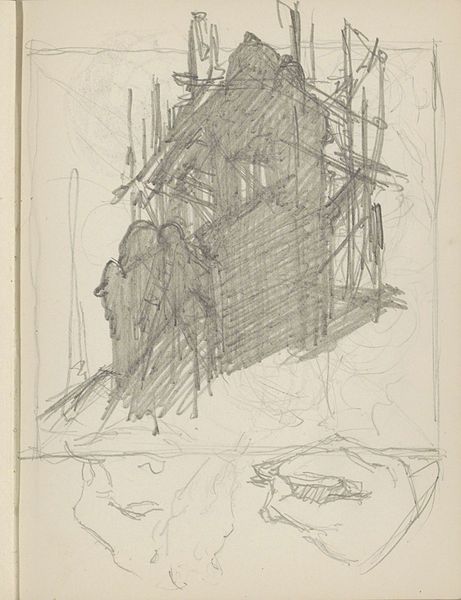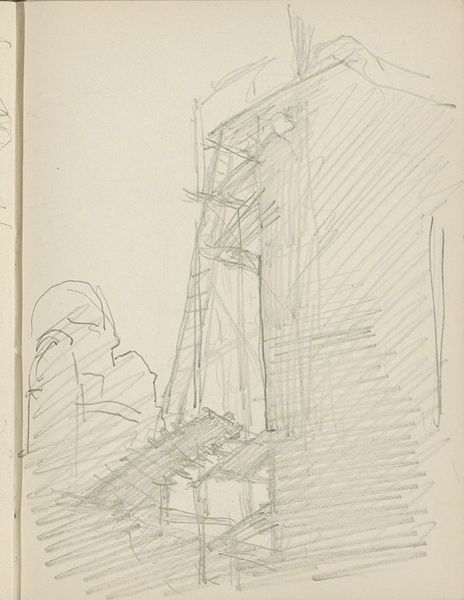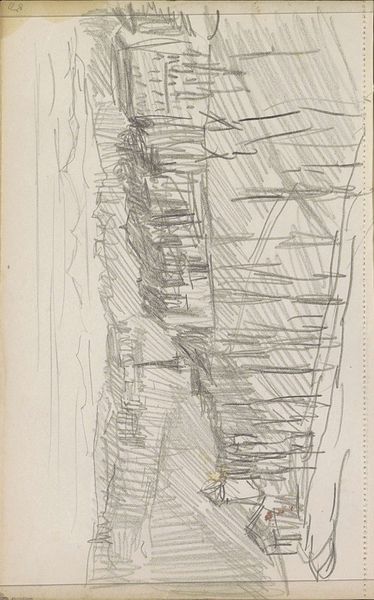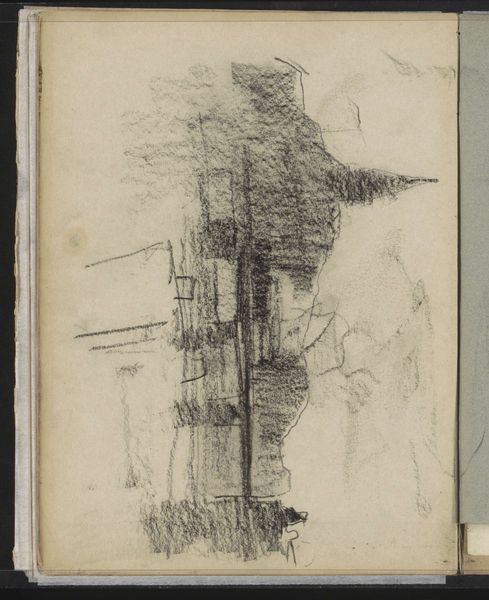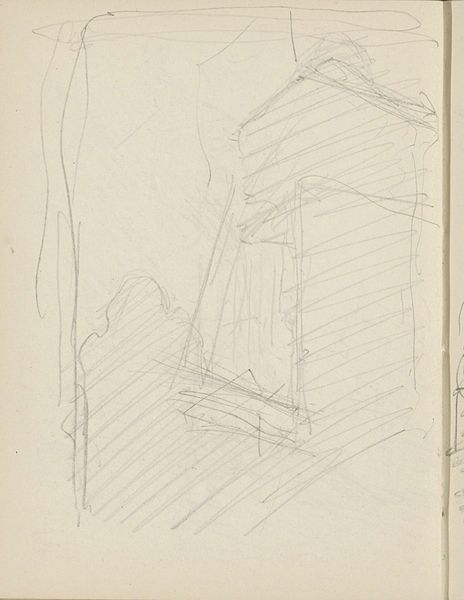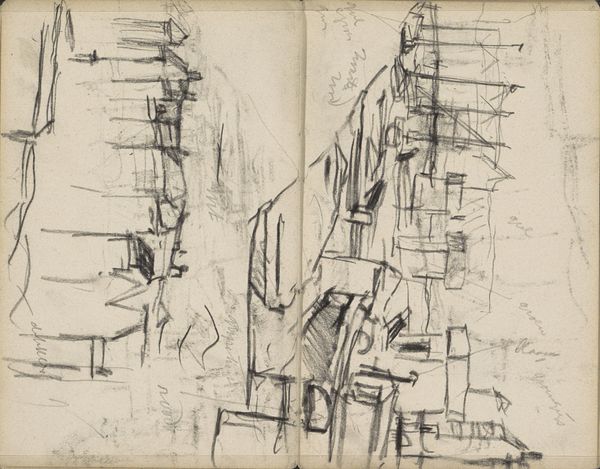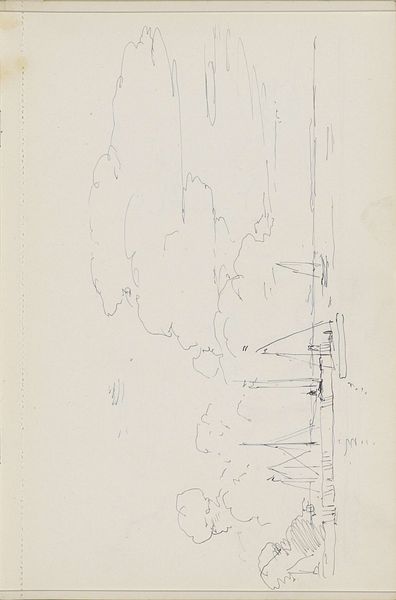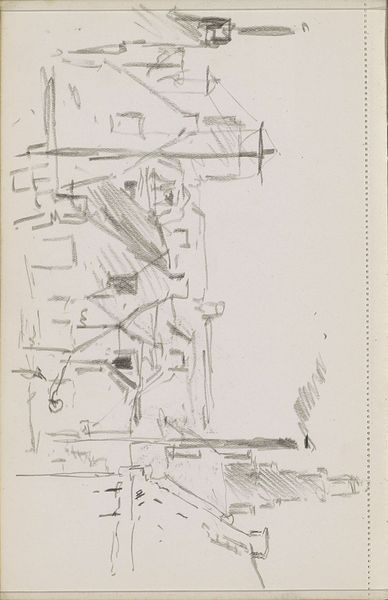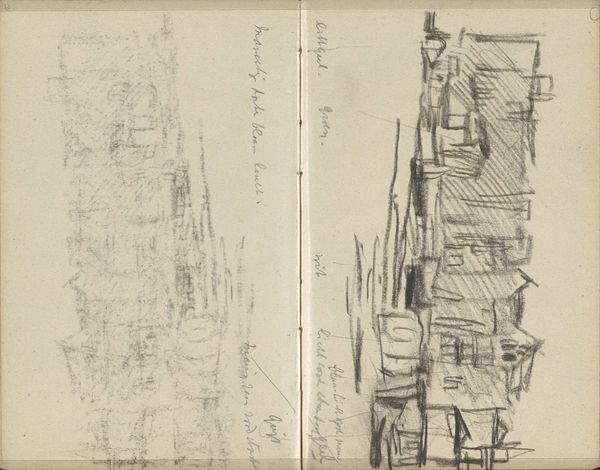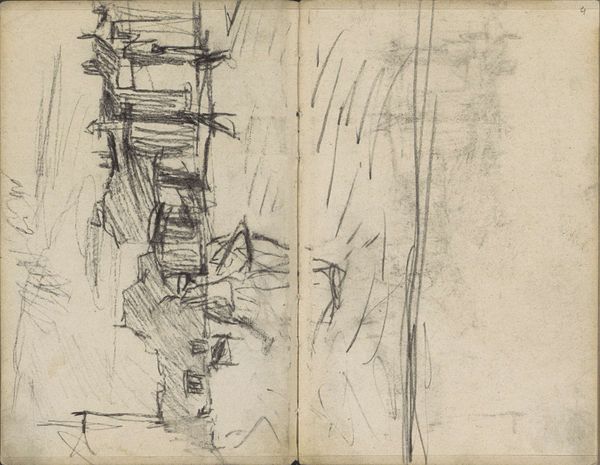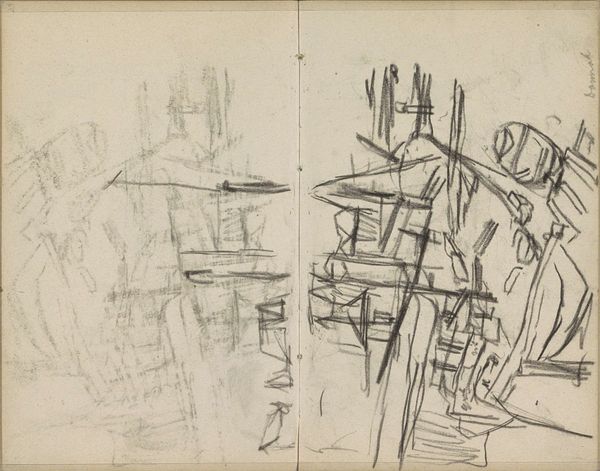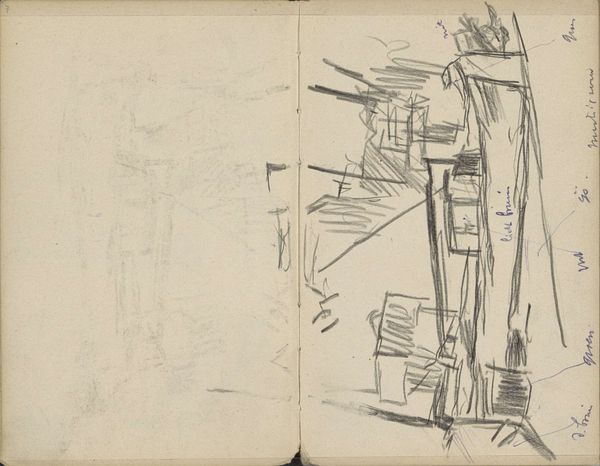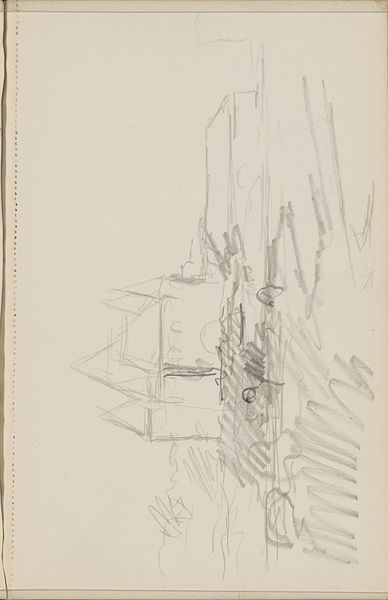
drawing, pencil
#
drawing
#
form
#
pencil
#
line
#
cityscape
Copyright: Rijks Museum: Open Domain
Curator: Ah, Reijer Stolk’s “Tower Under Scaffolding.” I am struck immediately. Such subtle grey pencil lines that capture this giant building—from roughly 1906 to 1945, this drawing, currently held at the Rijksmuseum in Amsterdam, showcases form using a lot of light pencil markings. What strikes you? Editor: It feels like a construction site poem! So much potential energy wrapped up in those crisscrossing pencil strokes. Look at how he hasn’t shied away from depicting labor, this temporary skeleton holding the tower, which hints at a certain societal infrastructure needed to sustain and evolve urban monuments. It looks hectic and peaceful simultaneously. Curator: Exactly! Stolk found such beauty within these everyday urban interventions, where buildings are living things, always under repair or evolution. The sketch invites us into his raw perspective – to witness art happening spontaneously as daily labor and architecture intersect. I’m wondering about the scaffolding itself as a medium here. Editor: A great point—I mean, scaffolding is typically seen as purely functional and hidden away, right? Stolk is literally drawing attention to the process of construction and care. So the work highlights labor by way of line quality, that can be seen as inherently material because the soft texture on paper emphasizes temporality, impermanence. How interesting that he picks a drawing rather than a painting for that aim. Curator: Perhaps the fragility of a pencil sketch mirrors the delicate balance required to sustain such structures over time, all those many decades! Think of all the labor and material resourcing that took place around this artwork, as we view this tower standing like the proud but tired recipient of collective efforts. Editor: Right, a fascinating lens through which to examine urbanization—considering labor, materials, the ephemeral quality, and this push and pull between permanence and continuous reconstruction. Curator: Yes! I think Stolk teaches us how to look – not just at completed objects but at processes. He turns an ordinary scene into something thought-provoking, where viewers are forced to appreciate our environment from multiple angles. Editor: Ultimately it's about considering urban spaces through labor. Curator: Indeed. It reframes the urban monument, offering more honest perspective with human effort instead of simply a perfected skyline.
Comments
No comments
Be the first to comment and join the conversation on the ultimate creative platform.
